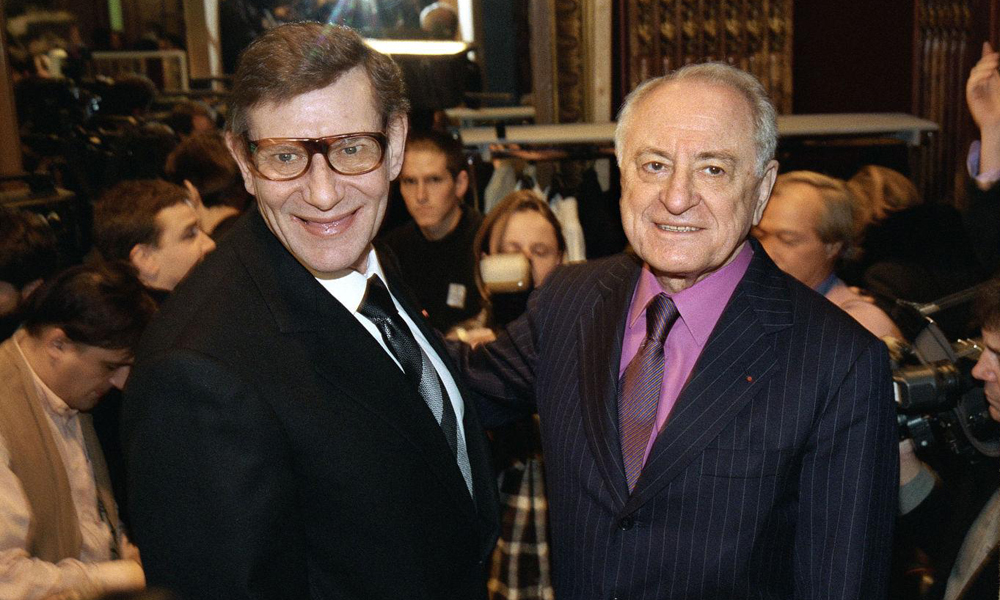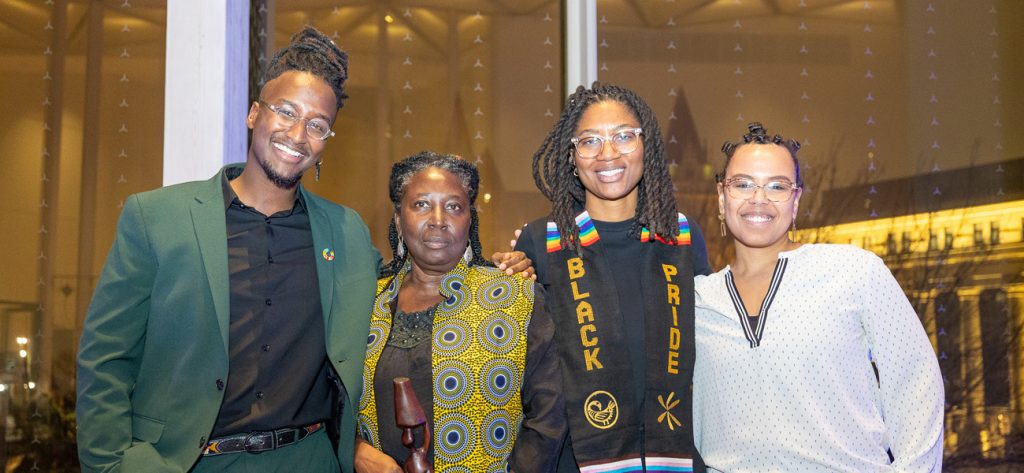The key to the elusive and enviable long-term relationship…
By Paul Gallant
Photo: Pierre Berge and Yves Saint Laurent in 1998 (Getty)
Yves Saint Laurent and Pierre Bergé met in 1958 and not long after falling in love, together founded the illustrious Saint Laurent brand.
“Fashions fade; style is eternal,” the fashion icon once famously declared. Revamp the sentence as “Passions fade; devotion is eternal” and you are getting close to describing the relationship between the two men. They split in 1976, short of a 20-year anniversary, but Bergé continued to drive the company’s affairs. When YSL stopped designing in 2002, Bergé created Fondation Pierre Bergé-Yves Saint Laurent, which conserves and promotes YSL’s vision through two museums, one in Paris, one slated to open this fall in Marrakesh, Morocco, a city both men loved and where they spent much time.
Bergé, who died in September at age 86, was perhaps less globally famous than his mate, but he was a well-known businessman and philanthropist in France. He founded and invested in media both mainstream and queer (Globe magazine, Le Monde, Têtu magazine, Pink TV), and backed unflinching gay/AIDS organizations like ACT UP Paris. But his relationship with YSL trumped all other interests. The captain of industry reportedly married YSL (well, formed a union through France’s pacte civil de solidarité) days before the couturier died in 2008.
Many gay men joke about the rapid turnover of their romantic relationships—the stereotype has even been used as a perennial argument against same-sex marriage—but I know a substantial number of gay couples who have been together for 25 years or more. Those who have been together for, say, between 30 and 40 years make for interesting case studies, having coupled up at a time when an ugly, painful death caused by HIV/AIDS was a real possibility and rampant homophobia across all sectors of society forced many of them to, at the very least, keep their relationships discreet. With so few people out of the closet back then, and so many of those folks carrying trauma and internalized homophobia, it’s hard to imagine finding someone whose attributes and interests would make it through today’s rigorous app filters or, if they did, having the wherewithal and courage to stick it out.
What makes for long-lasting love?
It’s fun to theorize about what makes same-sex relationships last for a long time, especially for those who don’t rely on the experience of raising children to keep things fresh. Is it fundamentally about monogamy or non-monogamy, sexual attraction, and how couples deal with lust’s diminishing returns? Is it that long-term relationships require at least one special individual with a miraculous amount of patience for the foibles of others? Do couples whose personalities and habits balance out along some spectrum have an easier time of it? (Perhaps partner #1 loves domesticity while partner #2 loves bringing home the bacon; or partner #1 is a flamboyant attention seeker while partner #2 is a wind-beneath-my-wings type…. I know I’m getting very close to sexism here.)
Toronto therapist Jim Cullen says gay couples who naturally yin-yang each other are an anomaly. “They’re lucky to have found each other,” he tells me. “Normally with men, you get two Type As together and there’s a lot of jockeying for power and control. Men usually want to be the alpha dog.”
Ultimately, most people don’t like taking out the garbage, going through the motions of having meh sex, or withholding their opinions on the perfect paint colour for the bedroom, so staying together in the long term comes down to developing ways of communicating and behaving that build respect, understanding and trust.
While it’s possible for a social animal to successfully pair up with a homebody, such a couple needs to develop reliable ways to express these core values. How do I convince you that my staying out until 3 am isn’t disrespectful to you and your love of TV, and that I was honest when I said I didn’t hook up with that guy I told you I had a crush on? Is it the words I say to you? Is it that after each night of carousing I reliably return home ready to sex you up? “How it’s received on the other end is very important, because everybody has a different love language,” says Daniele Doucet, a clinical counsellor and sex therapist in Vancouver and Squamish, BC.
You don’t want a copycat relationship either; it’s a recipe for boredom. Cullen suggests having separate interests as well as shared interests, vacations together and also apart. Having the right expectations going into a relationship and adjusting expectations along the way—particularly sexual expectations, as bodies mature, grow soft and perform less dependably—goes a long way. “People often morph into something they think that prospective partners want, as opposed to actually being who they are,” says Cullen. “People who want monogamy will move into open relationships because they’re terrified of losing that partner.” Men especially need to discover who they really are, and learn to express it.
Over the long term, gay men can risk evolving into cohabitating buddies, each preoccupied with his own thing, not functioning as a unit. By contrast, same-sex female couples often struggle with the opposite problem. It’s true: lesbians can over-process and fuse together, blurring personal boundaries. “For females, there’s a real push for an emotional connection, being seen, being understood. All the gay guys I have in my personal life do things independent of each other. I’m queer, and I can tell you that all the queer women in my life do everything together,” says Doucet.
Because queer relationships haven’t traditionally had socially propagated templates for success, there is room for invention—which, of course, demands even better communication skills. Since the legalization of same-sex marriage in Canada between 2003 and 2005, and the gradual, not-yet-ideal improvement of attitudes towards LGBT people, both Doucet and Cullen have noticed that young queer people today start out on relationships with less internalized homophobia and less negative baggage than their predecessors. But that’s not the only difference. Those who have come of age post-2003 also have a digital world of possibility at their fingertips: a seemingly infinite number of potential partners and sexual conquests, ready reference to polyamorous, non-monogamous and other non-traditional templates for relationships. Some digital natives are better at communicating online than in person, though the latter is what’s needed for maintaining healthy relationships.
Which is all to say that it’s become much easier—and simultaneously much harder—for LGBT people to find and maintain satisfying long-term relationships.
A shared purpose and vision, like that shared by Saint Laurent and Bergé, can’t hurt. A relationship that’s simply an end in itself can more easily grow tired. A relationship that’s built to change the world—or at least make the world look fabulous—can live on forever.
—
PAUL GALLANT is a Toronto-based writer and editor who writes about travel, innovation, city building, social issues (particularly LGBT issues) and business for a variety of national and international publications. He’s done time as lead editor at the loop magazine in Vancouver as well as Xtra and fab in Toronto, and is currently executive editor at BOLD magazine.

How To Become A Long-Term Gay Power Couple
Related Articles
Photo Gallery: The Enchanté Network’s National Black 2SLGBTQI+ Futures Summit
Highlights from Canada’s largest convening of Black 2SLGBTQI+ leaders and movement makers
Travel Your Way To Better Health
Take your love of travel and combine it with a wellness goal – these five types of personal improvement getaways will have you coming home a better you
IN Community: 5 Organizations Offering Support To People Experiencing Intimate Partner Violence
Here are five community resources from the IN Directory that can offer help to 2SLGBTQI+ communities





POST A COMMENT